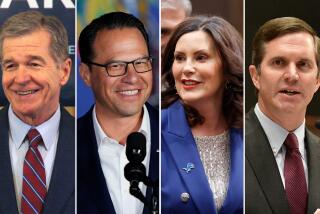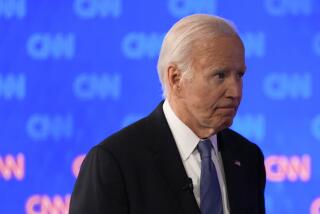Our Cluttered Constitution
Californians have a constitutional right to go fishing. That sounds like a slice of paradise, but it’s actually a small part of a big problem, a state government slowed to near standstill by its own rules and restrictions.
Article I, Section 25 of the California Constitution declares: “The people shall have the right to fish upon and from the public lands of the state and in the waters thereof .... “ Section 25 was adopted by the people Nov. 8, 1910, when somehow the right to fish was placed beside the rights of habeas corpus and freedom of the press. And the clause has survived repeated attempts to cull the state Constitution of needless and archaic verbiage.
Section 25 is one of more than 500 amendments to the 1879 Constitution, adopted when California was primarily an agricultural state of 865,000 people. The glut of amendments hamstrings a state government that now serves 36 million Californians.
Tax and spending policy written into the Constitution by special interests using ballot initiatives has limited the ability of both state and local governments to cope with modern society. Proposition 13 is the most obvious example.
As Gov. Arnold Schwarzenegger embarks on a promised radical reform of state government, he should not limit himself to the more than 1,000 proposals contained in the California Performance Review.
The review, compiled by state workers and outside experts over the last several months, has plenty of worthy ideas but doesn’t “blow up the boxes,” as Schwarzenegger promised months ago. It rearranges them and renames them while organizing state government more logically. But the proposals for restructuring government fall short of some obvious notions advanced in the past, such as the creation of a single department of education under the authority of the governor and the elimination of the redundant state superintendent of public instruction.
What Really Needs Fixing
The goal of reform should be, as the governor promised, a more efficient government that is more responsive to public needs. For government to be that, the governor needs authority and responsibility to make bold decisions, to be the person visibly accountable for their outcome. The present system fragments power and obscures responsibility, making citizens frustrated. Not knowing whom to blame, they blame them all.
In the 1995 book “Constitutional Reform in California,” professors Bruce Cain of UC Berkeley and Roger G. Noll of Stanford said that an overriding problem “is the perception that government is unresponsive to citizens.” But the reaction of citizens and special interests has been to pass initiative measures that make it even more difficult for government to respond.
These include Proposition 13, which achieved the primary goal of cutting property tax rates but rendered local government a stepchild of Big Brother in Sacramento. Proposition 98, passed in 1988, guaranteed adequate state money for public schools but at the expense of other programs -- including higher education -- during lean economic times. Legislative term limits made lawmakers more consumed by fundraising and less responsive to the voters.
Don’t Think Small
What changes does California really need?
* Start with a streamlined executive branch headed by a governor and lieutenant governor elected as a team, an elected attorney general and elected auditor or controller. Let the governor appoint the treasurer and secretary of state, as happens in other states.
* Increase the size of the Legislature from the present 80 Assembly members and 40 state senators so lawmakers will be closer to constituents. It’s impossible for an Assembly member to adequately represent 450,000 citizens, or a state senator 900,000. New York and Texas have 150 members in their lower houses.
* Relax the state’s strictest-in-the-nation term limits so members can learn their jobs and develop leadership skills. Allow the Legislature to pass budget and tax measures with a majority vote rather than the presently required two-thirds, which leads to deadlock even with Schwarzenegger trying his best to avoid it. Give redistricting of legislative seats to an independent panel to prevent gerrymandering, making districts more politically competitive and giving moderates a chance.
* Adopt substantial public financing of legislative campaigns to free lawmakers from the influence of public employee unions, Indian tribes and business and industry groups.
* Sharply define the duties of local government and give cities and counties the powers and the revenue sources they need to execute those duties.
How can all this be done? Probably only by convening a state constitutional convention, an action that would require a two-thirds vote of the Legislature followed by approval of the voters in a statewide election. Politicians and scholars alike fear that’s impossible, given how politically divided and distrustful Californians are these days. But government is in a major crisis of debt and dysfunction.
Schwarzenegger may be the one political figure able to persuade both voters and politicians that government needs a new structure, not just a new roof and a coat of paint. He might fail, but he’d be admired for trying.
More to Read
Get the L.A. Times Politics newsletter
Deeply reported insights into legislation, politics and policy from Sacramento, Washington and beyond. In your inbox three times per week.
You may occasionally receive promotional content from the Los Angeles Times.






